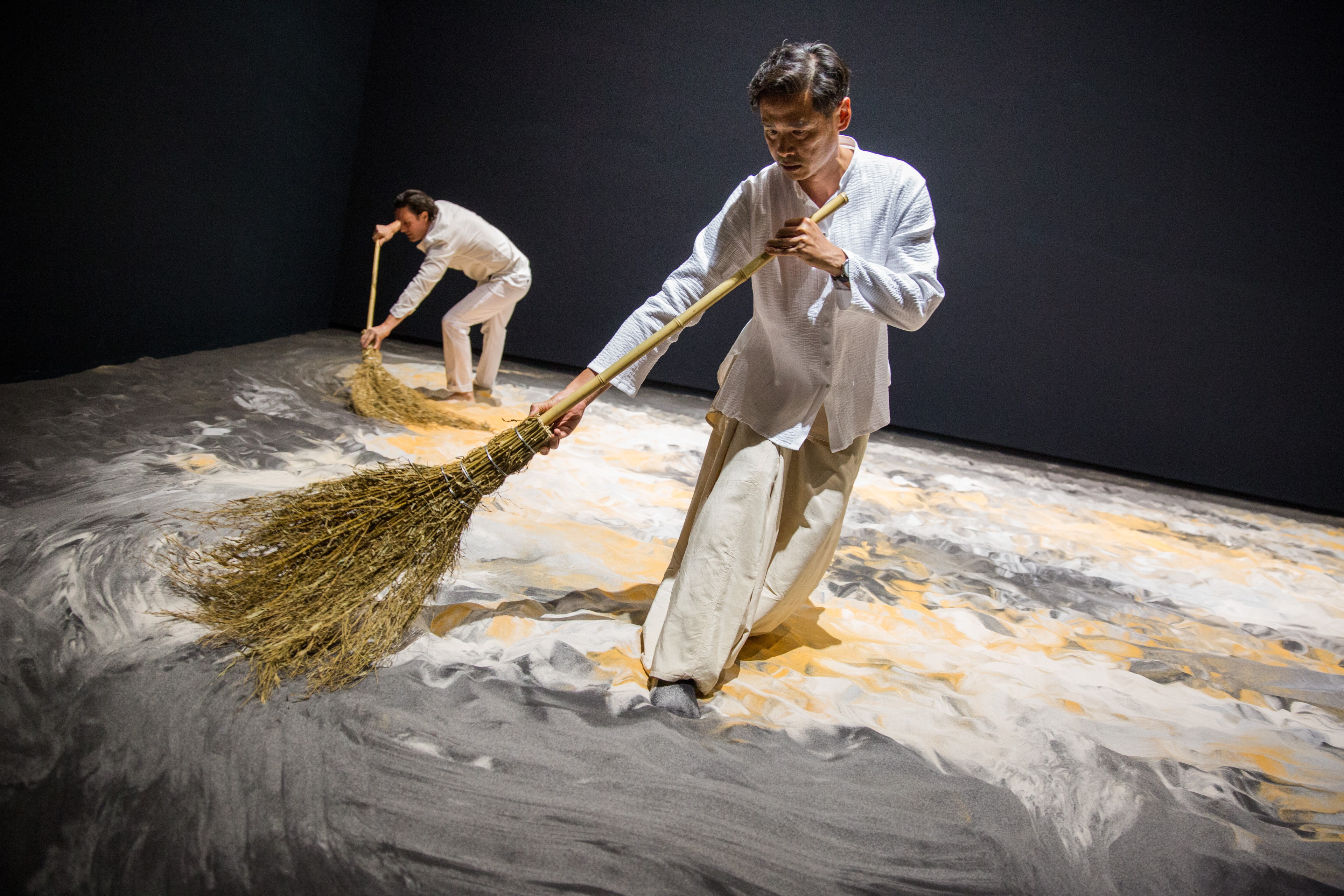Artist Lee Mingwei thinks a lot about pain and trauma—but his art evokes joy, as demonstrated by a new survey of his work opening at San Francisco’s de Young Museum Saturday. The Taiwanese-born conceptual artist creates immersive and imagination-expanding worlds for viewers that demand participation.
“They’re incredibly beautiful and hopeful installations,” said Claudia Schmuckli, the curator in charge of contemporary art and programming at the de Young Museum. “They point to a way out of suffering and trauma without negating the pain.”
When Schmuckli began rethinking the role of the museum during the height of the pandemic, she realized there was no one better than Lee to examine the turbulence of that time period.
“Lee Mingwei: Rituals of Care” at the de Young includes seven art installations created between 1995 and 2024 as a response to the trauma of war, the pandemic and simple everyday life, all of which directly involve the viewer.
At The Letter Writing Project, museumgoers can step into wooden, monochrome booths—after removing their shoes—and write letters to the dear or departed they’ve never found time to pen. If the letters are addressed, the museum will post them. If not, participants can choose to leave them unsealed so others can read them, allowing for never-expressed emotions to reverberate through time.
“Calligraphy is the first form of art we’re taught,” said the Taiwanese-born artist. “We call letter writing a conversation between fish and geese, two migratory animals.”
Lee has collected 60,000 letters in his home studio since the start of the project in 1997, missives he plans to burn ceremonially when the time is right.
In The Mending Project, viewers can bring in their torn clothes and have them repaired by Lee and his team of volunteers. Rather than making the rips disappear, though, the artist will embellish them in a process that echoes the Japanese art form of kintsugi in which cracks are repaired with gold. The point is not to make past damage invisible but to transform it into something beautiful.
“It’s a stranger doing a kindness gesture to another stranger,” Lee said, “saying, ‘We’re here for you.’”
The installation’s genesis has a very personal backstory—one you won’t read on the walls of the gallery.
At the time of 9/11, Lee was living in New York with his partner, who returned home covered in ash after a period of being missing. While the artist was waiting for his beloved, he began mending things. It was the only thing he could think to do with his worry regarding the safety of his partner, who worked on the 97th floor of the North Tower and who ended up losing 400 people he knew that fateful day.
“It’s about how we move forward as a human being,” Lee said of the installation anchored by colorful spools of thread on a wall.
Lee’s Guernica in Sand—a rendition of Pablo Picasso’s renowned war painting of the same name in sand—employs the complementary forces of creation and destruction to comment on the ravages of war. The work will be transformed when the artist and three guests step onto the piece and sweep the sand into a pile in the center. But before that, on Saturday between noon and 4:30 p.m., Lee will complete the unfinished portion of the sand image as an invited viewer walks along the piece.
“Are they creating or destroying?” Lee asked. The inspiration for this piece, which Lee first created during the Iraq War, came from a discomforting personal experience—he and his partner being trapped in a Jeep in Bolivia during a sandstorm. With the sand three-quarters of the way up the the cars’ windows, they both thought they’d die that day.
The exhibition stretches all the way back to the artist’s graduate school portfolio by including 100 Days with Lily, a piece depicting the time Lee spent raising a lily from seed to death in large-form prints.
“It bears all the seeds of his future projects,” Schmuckli said.
One of the most visually striking pieces in the exhibition, which is scattered across free-to-access galleries in the museum, is Our Peaceable Kingdom. It’s an installation that asks artists to copy or reinterpret the famous painting by Quaker minister Edward Hicks, The Peaceable Kingdom. The 39 canvases propped up on easels are in a range of styles and by a range of artists: Australian, Indonesian, Pakistani, Korean, German, Dutch, American and others.
Lee was born in Taiwan in 1964 and currently lives in New York, Paris and Taipei. He was educated in the Bay Area, having attended high school locally and doing his graduate work at the California College of the Arts.
In the artist’s first-ever survey exhibition in the U.S., Lee reorients the role of the museum as a place to engage—instead of only gaze.
“People have to participate in it, and it’s relational,” Schmuckli said. “He has created ways for all of us to deal with our pain.”
Lee Mingwei: Rituals of Care
📍 de Young Museum, 50 Hagiwara Tea Garden Drive
🗓️ Feb. 17-July 7
🔗 famsf.org
